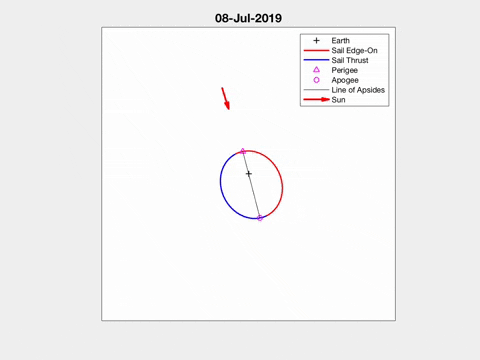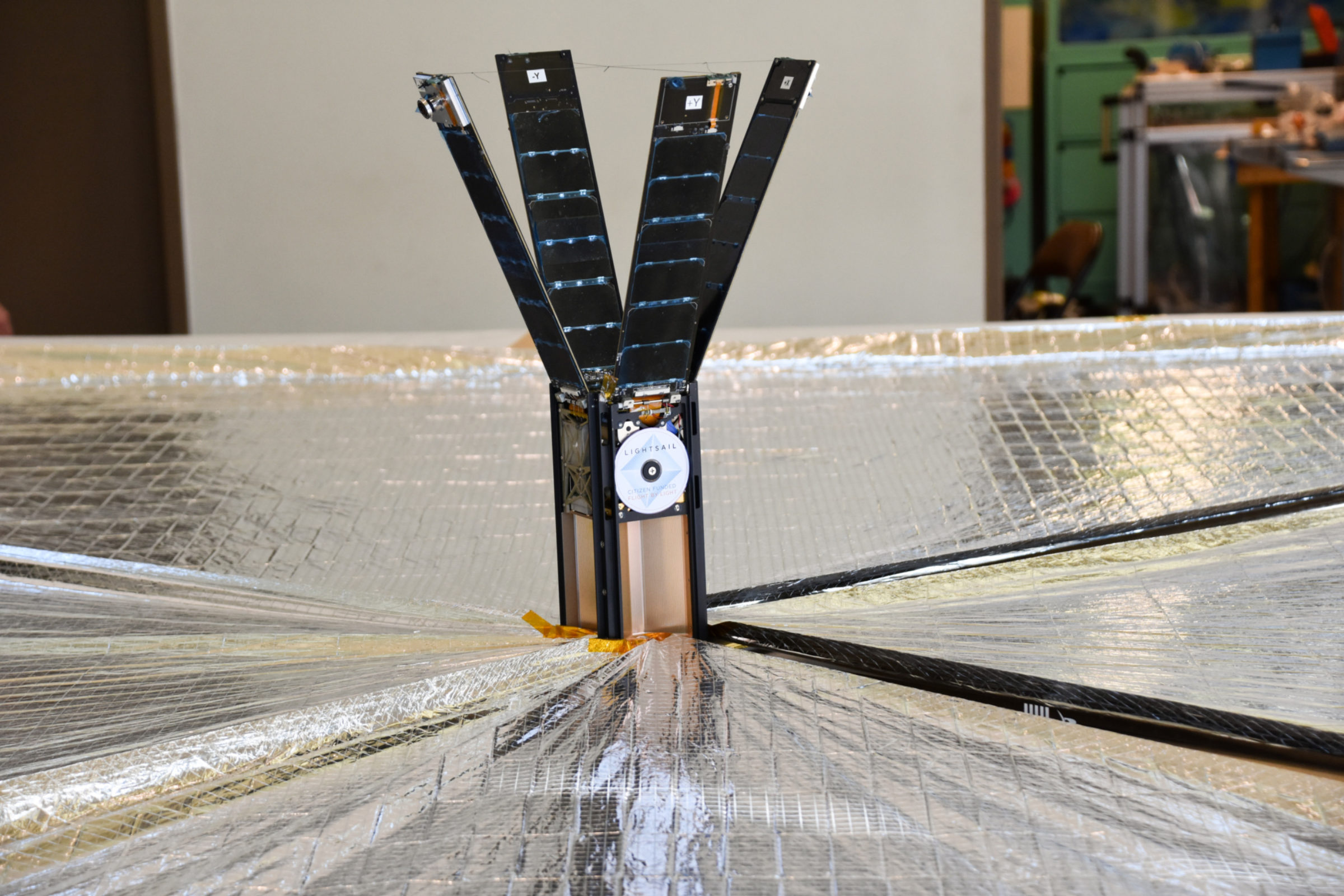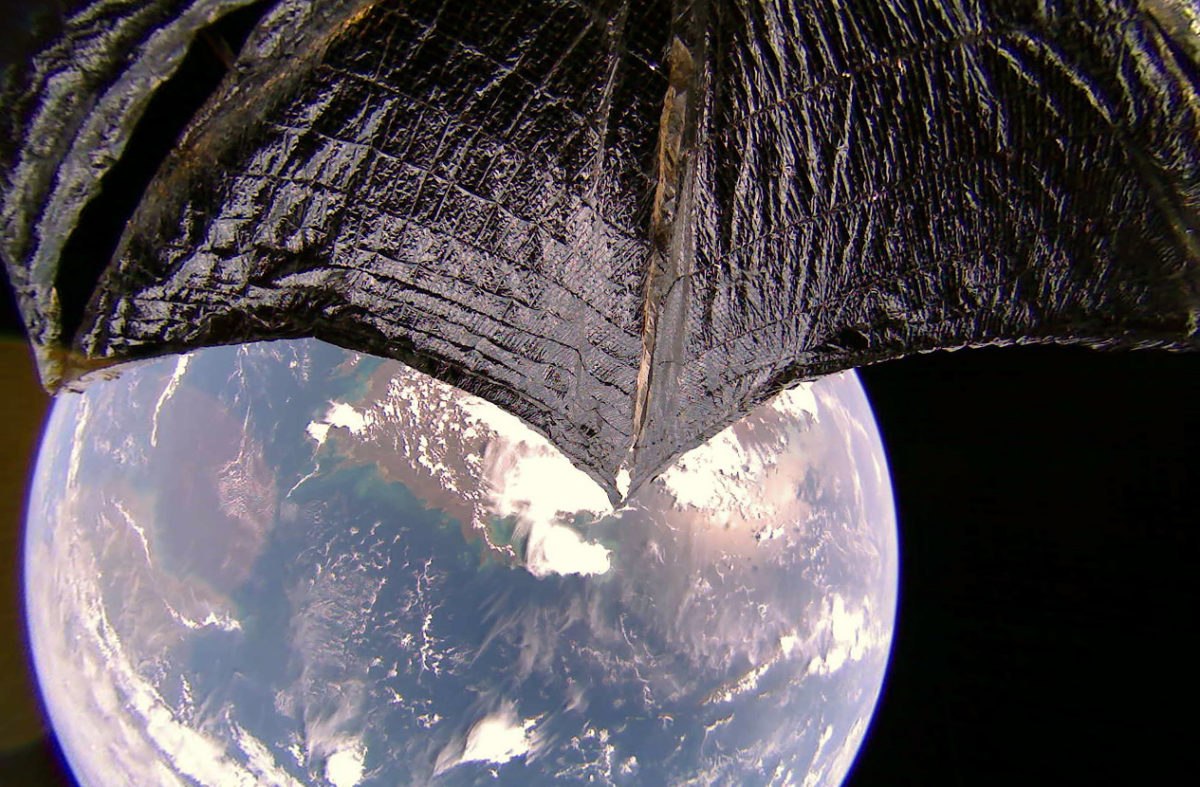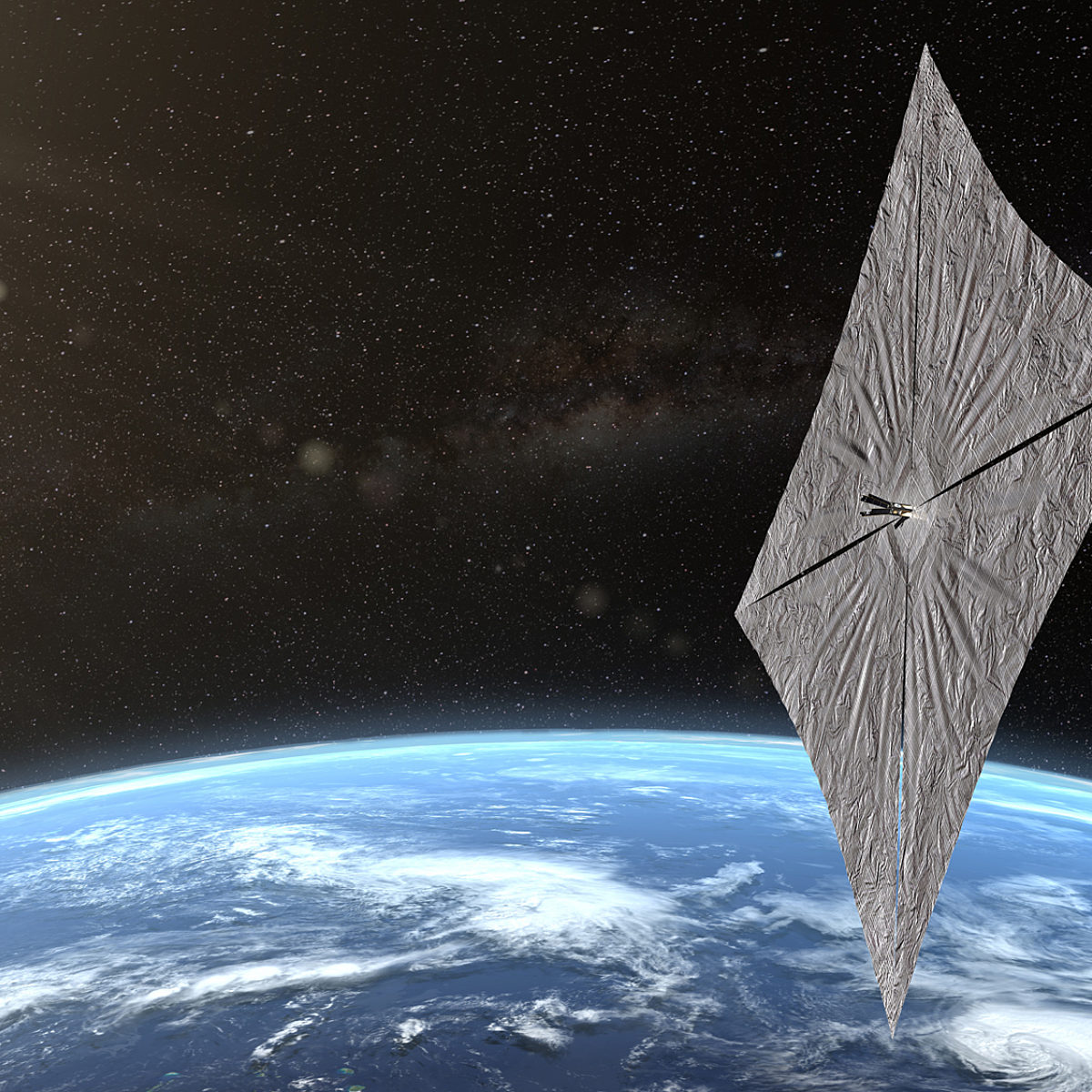Jason Davis • Jan 10, 2020
Here's What We've Learned So Far from LightSail 2
High above Earth, The Planetary Society's LightSail 2 spacecraft is still sailing on sunbeams. During the 5 months since LightSail 2 deployed its solar sail on 23 July 2019, the spacecraft has continued to demonstrate the first controlled solar-sailing flight in Earth orbit.
The LightSail 2 team is releasing a paper today that describes new results from the mission. Purdue University’s Justin Mansell is also presenting the results at the 30th Space Flight Mechanics Meeting in Orlando, Florida. The paper recaps mission events through late November, discusses the performance of the solar sail and attitude control system, and describes how the spacecraft's orbit has changed.

LightSail, a Planetary Society solar sail spacecraft
LightSail is a citizen-funded project from The Planetary Society to send a small spacecraft, propelled solely by sunlight, to Earth orbit.
Earth's atmosphere is a drag
LightSail 2 flies at a higher altitude than most satellites in low-Earth orbit. While the International Space Station orbits Earth at an altitude of about 400 kilometers, LightSail 2 orbits at about 720 kilometers. Since fewer spacecraft orbit at LightSail 2’s altitude, there wasn’t enough data on Earth’s atmospheric density to reliably predict how much atmospheric drag would slow down the spacecraft. We now know for certain that the atmosphere at 720 kilometers is dense enough to overcome the thrust imparted by solar sailing.
The team uses a simple on-off sail control strategy each orbit, turning the sail edge-on to the Sun’s rays when the spacecraft is traveling toward the Sun, and face-on to the Sun when moving away from it. Out of each 100-minute orbit, LightSail 2 spends 67 minutes either in eclipse or moving toward the Sun. Of the remaining 33 "sail-able" minutes each orbit, the spacecraft spends about 5 minutes turning to the desired orientation. Therefore, LightSail 2 enjoys at most 28 minutes of each orbit in an orientation for capturing the momentum of solar photons to change its velocity.
Mansell and his colleagues documented LightSail 2's orbital change during time intervals in which it was actively orienting itself for solar sailing and compared that change to periods in which the orientation was not controlled. When the spacecraft was randomly oriented, its semimajor axis—a measure of the size of the orbit—shrank by an average of 34.5 meters per day. When it was solar sailing, the orbit only shrank by an average of 19.9 meters per day. Yet, the rate is highly variable and the semimajor axis actually increased by as many as 7.5 meters some days when sailing, which means LightSail 2 increased its orbital energy during those periods.
LightSail 2 Sample Orbit Animation This video shows LightSail 2's orientation with respect to the Sun during a single orbit on 24 September 2019. Gaps between data points have been interpolated. The red line shows the direction of the Sun, and the blue line shows the direction of the local magnetic field. When the sailing command is “feather,” LightSail 2 attempts to turn its sail edge-on to the solar photons, meaning the red arrow should be roughly parallel with the sail. (The Sun to -z angle should be roughly 90 degrees.) When the sailing command is “thrust,” LightSail 2 tries to turn its sail broadside to the solar photons, meaning the red arrow should roughly make a 90-degree angle with the sail. (The Sun to -z angle should be roughly 0 degrees.) For more, see https://www.planetary.org/blogs/jason-davis/heres-what-we-learned-so-far-ls2.html. Video credit: Justin Mansell, Purdue University
The increases in orbital energy from solar sailing are generally not enough to overcome atmospheric drag, so LightSail 2’s orbit is gradually decaying. Pre-launch orbital models predicted that the spacecraft would reenter Earth’s atmosphere and burn up about a year after sail deployment. But since there are few prior examples of spacecraft like LightSail 2 having high area-to-mass ratio, the actual timeline will provide new information about orbital decay rates.
Future solar sails will be used in higher Earth orbits, or on interplanetary trajectories. NASA's NEA Scout will ride a Space Launch System rocket out near the Moon and then use solar sailing to visit an asteroid. The LightSail 2 team is sharing data and expertise with the NEA Scout team.
The ups and downs of LightSail 2's orbit
If you've looked at our mission control page over the past few months, you may have noticed LightSail 2's orbital high and low points above the Earth, known as the apogee and perigee, respectively, have been cycling up and down.
This chart shows LightSail 2’s orbit apogee and perigee as reported by space-track.org since 8 July 2019. Sail deployment occurred on 23 July 2019. The entire dataset can be downloaded here.
Right after sail deployment in July, LightSail 2's apogee increased, while perigee decreased. In September, the trend reversed: apogee decreased, while perigee increased. In late October, the trend reversed again. And then it began reversing again in December.
This cycle has two causes: Earth’s nonspherical shape, and its orbital motion around the Sun. Earth's diameter at the equator is about 42 kilometers larger than it is at the poles, making its gravity stronger over the equator. This uneven gravity makes the positions of perigee and apogee precess, or wobble; if you were watching the spacecraft’s orbit from high above the north pole, you’d see it wobbling like a hula hoop spinning around your waist. While all this is happening, Earth is also revolving around the Sun, changing the angle between the light pressure from the Sun and the positions of LightSail 2’s apogee and perigee.

The best orientation for raising LightSail 2’s apogee is when perigee occurs on the thrust-on side of the orbit, as shown above in blue. Conversely, when perigee occurs on the thrust-off side of the orbit, as shown above in red, apogee decreases.
Momentum management
One of the mission’s major challenges stems from LightSail 2’s single momentum wheel, which the spacecraft uses to swing itself parallel and perpendicular to the Sun’s rays each orbit. The wheel hits a pre-defined speed limit about once per day, whereupon LightSail 2 must exit solar-sailing mode and stabilize itself with its electromagnetic torque rods.
Early in the mission, the team was doing this manually, which proved to be inefficient, especially when communications were spotty, or when the spacecraft was suffering from other technical glitches. The process is now automated, which has improved performance. In the new paper, the team conveys an important lesson for other solar sail spacecraft in Earth orbit: managing the momentum imparted by frequent sail orientation changes is a key technical challenge.
Power generation
LightSail 2 only has solar cells on one side of its solar sail. LightSail 1 had a solar panel on the opposite side, but this was removed for LightSail 2's design so engineers could install a cluster of special mirrors used to laser-range the spacecraft from Earth. This process involves zapping LightSail 2 with a laser and measuring the reflection time to more accurately determine the spacecraft’s orbit.

In certain orientations, LightSail 2's solar sail entirely shadows the solar panels, and the spacecraft does not receive adequate power from the Sun, causing brownouts. The team has been able to work around brownouts by carefully managing the spacecraft's power budget and attitude-control mode. Future solar sail spacecraft should take sail shadowing into account for mission planning.
What’s next?
The LightSail 2 team recently added a new control mode to the spacecraft called sun-pointing. This mode is designed to keep the solar sail face-on to the Sun throughout its full orbit. A constantly Sun-facing attitude won’t reduce orbital decay like the on/off mode does, but it reduces momentum-wheel saturation and provides a favorable orientation for battery charging. It will also test the spacecraft’s pointing accuracy, and could provide a more consistent initial attitude for starting for on-off thrust maneuvers.
The mission team will also continue to take pictures. The technical reason for pictures is to document the sail’s condition and shape, but the pictures are also beautiful to look at for the team and public alike. You can see all raw images from the spacecraft here, or view processed images in our LightSail 2 multimedia gallery.
Finally, as the orbit shrinks, the team will study the effect of the sail on the rate of orbital decay, sharing the data with other teams who are studying the use of drag sails to deorbit spacecraft.




 Explore Worlds
Explore Worlds Find Life
Find Life Defend Earth
Defend Earth


